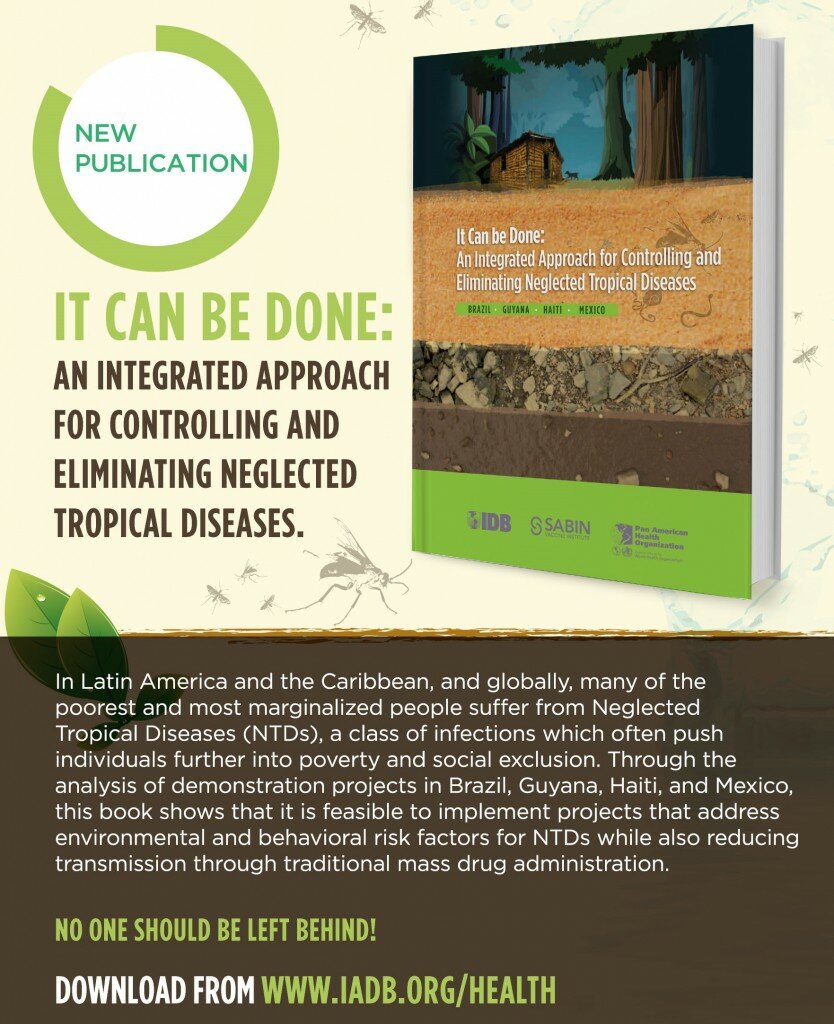While major gains have been made in the fight against neglected tropical diseases (NTDs), the Latin American and Caribbean region’s most poor and marginalized populations still suffer from the pain, disability and social exclusion associated with NTDs — diseases which have been successfully controlled in higher income countries.
However, the Latin America and the Caribbean Neglected Tropical Disease Initiative (LAC NTD Initiative), a partnership between the Inter-American Development Bank (IDB), Pan American health Organization (PAHO) and Sabin Vaccine Institute’s Global Network for Neglected Tropical Diseases, is proving that the control and elimination of NTDs within the region is possible and within reach.
In a recently-published report, titled It Can be Done: An Integrated Approach for Controlling and Eliminating Neglected Tropical Diseases, the IDB draws upon four NTD demonstration projects to provide lessons learned in integrated NTD control projects. The projects, taking place in Brazil, Guyana, Haiti and Mexico, took an integrated approach to addressing NTDs by combining interventions from the water and sanitation and education sectors, and taking advantage of synergies within governments, NGOs and private sectors within the region. This integrated approach stands in contrast to the more traditional approach to addressing NTDs — one which historically involved concentrating on one disease at a time and offering medications and treatments to entire at-risk populations to stop the spread of disease.
The work undertaken by the LAC NTD Initiative is critical; the Latin America and Caribbean region has been plagued by underfunding for NTD control even though more than 100 million individuals in the region are infected by at one or more of these diseases. Yet NTDs can be treated at a very low cost in comparison to other public health interventions. For example, it is estimated that lymphatic filariasis, onchocerciasis and trachoma could be eliminated, and soil-transmitted helminth and schistosomiasis controlled in the Latin America and Caribbean region by 2020 for as little as US$0.51 per person in most countries.
As the world quickly approaches the deadline of the United Nation’s Millennium Development Goals (MDGs), and the Post-2015 Sustainable Development Goals go into effect, we must focus on the world’s poorest and most marginalized communities who suffer from NTDs in an effort to ensure that no one is left behind.
It Can be Done: An Integrated Approach for Controlling and Eliminating Neglected Tropical Diseases seeks to inform policymakers and program managers’ efforts to design, manage, implement and evaluate integrated NTD programs. The report, which presents the first comparative analysis that uses a single methodology to investigate the feasibility of implementing integrated programs, will certainly move the world one step closer to ending the suffering caused by NTDs.
To read the full report, click here.




